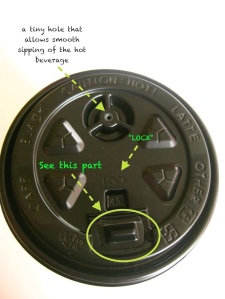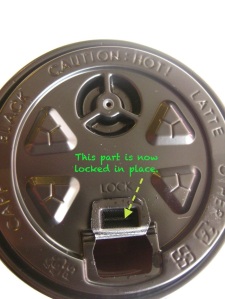Peneliti Indonesia pada ke mana?
May 13, 2011 Leave a comment
 Kamis 12 Mei 2011 malam saya datang ke Goethe Institut Jakarta, untuk acara Akber Akbar-nya Akademi Berbagi. Pembicaranya adalah Yanuar Nugroho, dimoderatori oleh Onno W Purbo, dengan topik Citizens in @ctions yang merupakan penelitian doktoralnya di Manchester University. Sebelum acara dimulai, para peserta yang telah menunggu dapat menonton Linimas(s)a, atau Timeliner(s), sebuah film dokumenter mengenai fenomena masyarakat sipil di Indonesia dalam memanfaatkan teknologi Internet dan social media untuk mencapai tujuan bersama, dengan hasil yang amat signifikan.
Kamis 12 Mei 2011 malam saya datang ke Goethe Institut Jakarta, untuk acara Akber Akbar-nya Akademi Berbagi. Pembicaranya adalah Yanuar Nugroho, dimoderatori oleh Onno W Purbo, dengan topik Citizens in @ctions yang merupakan penelitian doktoralnya di Manchester University. Sebelum acara dimulai, para peserta yang telah menunggu dapat menonton Linimas(s)a, atau Timeliner(s), sebuah film dokumenter mengenai fenomena masyarakat sipil di Indonesia dalam memanfaatkan teknologi Internet dan social media untuk mencapai tujuan bersama, dengan hasil yang amat signifikan.
Tautan terkait:
- Post Ainun Chomsun, inisiator Akademi Berbagi, mengenai Akber Akbar malam itu di blog-nya http://osamaliki.wordpress.com/
- Informasi mengenai Linimas(s)a http://kalamkata.org/
- Linimas(s)a di Youtube: Bagian 1, Bagian 2, Bagian 3 dan Bagian 4
- Laporan penelitian Yanuar Nugroho: Social media & civil society in Indonesia (updated)
- Presentasi Yanuar Nugroho di Akber Akbar: Citizens in @ction: MIOIR – HIVOS – Jakarta presentation
- Liputan mengenai Akber Akbar di detik.com: Akses Internet Masih Terpusat di Pulau Jawa
 Presentasinya sendiri sangat menarik, dapat dijelaskan dengan bahasa sehari-hari meskipun mestinya mengandung perhitungan-perhitungan dan analisa yang tidak sederhana. Sesi tanya-jawabnya tentunya juga sangat menarik karena adanya interaksi yang ekspresif dan spontan, tapi sayangnya saya harus meninggalkan tempat ketika tanya-jawab masuk ke sesi kedua, karena harus mengejar travel terakhir menuju Bandung. Berikut ini hal-hal menarik dan menyentil yang terus-menerus terpikir sejak keluar dari auditorium itu…
Presentasinya sendiri sangat menarik, dapat dijelaskan dengan bahasa sehari-hari meskipun mestinya mengandung perhitungan-perhitungan dan analisa yang tidak sederhana. Sesi tanya-jawabnya tentunya juga sangat menarik karena adanya interaksi yang ekspresif dan spontan, tapi sayangnya saya harus meninggalkan tempat ketika tanya-jawab masuk ke sesi kedua, karena harus mengejar travel terakhir menuju Bandung. Berikut ini hal-hal menarik dan menyentil yang terus-menerus terpikir sejak keluar dari auditorium itu…
– Bagaimana caranya agar teknologi Internet dapat merata, menjangkau seluruh wilayah Indonesia? “Kalau saya bisa menjawab pertanyaan ini, saya sudah jadi presiden”. Akses teknologi ini memang urusannya adalah kebijakan.
– Bagaimana caranya agar gerakan masyarakat sipil melalui internet dan media sosial ini dapat diimplementasikan secara menyeluruh dan dirasakan manfaat positifnya di Indonesia? Berbagi. Berbagi apa pun: informasi, urgensi, berita baik, dan sebagainya.
– Kegiatan online dan offline harus imbang agar ‘ajakan’ atau gerakan-gerakan di media sosial dapat berdampak signifikan. Ini ada hubungannya juga dengan fenomena sebuah gerakan yang berdampak
– Gerakan online sifatnya hanya sementara, berusia pendek, atau ketika tujuan sudah tercapai. Euforia pasti suatu saat akan reda. (Situs-situs Koin Prita, Bibit-Candra, dan sejenisnya kini telah berisi tautan-tautan berjualan yang makin tak jelas. Seharusnya pembuat akun atau moderatornya bisa menutup situs-situs tersebut?)
– ‘Click activist’ adalah mereka yang mengira bahwa hanya sekedar meng-click saja berarti sudah berbuat sesuatu. Ini tidak salah, karena memang berdampak, tapi ini tidak cukup.
– Bagaimana agar gerakan-gerakan semacam ini di Indonesia dapat diliput oleh media internasional, supaya dapat diketahui secara global? Sebenarnya kita bisa menulis tentang kita sendiri, dan ini yang sebenarnya sangat kurang di kita. Biasakanlah mencatat, merekam, menulis hal-hal yang dekat dengan kita dulu. Karena seharusnya kita yang paling tahu tentang diri kita sendiri. Bayangkan, beberapa waktu setelah meletusnya Merapi, peneliti-peneliti asing yang terlihat di wilayah sekitar gunung Merapi. Setelah bencana tsunami di Mentawai, peneliti-peneliti asing pula yang berdatangan ke sana. Seorang peneliti asing, di berbagai jenjang pendidikannya, tekun meneliti tentang makhluk halus di Indonesia. Peneliti Indonesia pada ke mana? Mari kita buat catatan dan publikasi tentang diri kita sendiri, sehingga kita tidak perlu mendatangkan atau bergantung pada media asing untuk meliput kita.
– Hampir semua di negri ini masih mengandalkan ‘strategi darurat’ dalam mengatasi permasalahan (komunikasi).
Kesimpulan utama yang dapat saya tarik dari acara malam itu adalah: Betapa besarnya sesungguhnya potensi masyarakat Indonesia dalam memanfaatkan media sosial ini, mengingat bahwa jumlah pengguna Internet di Indonesia = jumlah penduduk Kanada, jumlah pemilik akun Twitter di Indonesia = jumlah penduduk Singapura. Seharusnya bisa lebih kita optimalkan lagi.
Pasti masih banyak point yang belum saya tuliskan, sebab acaranya seru sekali. Mungkin saya akan kembali ke post ini dan menambahkan hal-hal yang saya ingat kemudian. Terima kasih untuk Akademi Berbagi dan Akber Akbar atas acaranya yang bagus sekali, dan yang telah memberikan kesempatan untuk berjejaring dengan orang-orang Indonesia yang hebat, yang membuat saya makin optimis bahwa masa depan Indonesia bisa menjadi jauh lebih baik!
*sketsa di atas saya buat sambil mendengarkan presentasi












